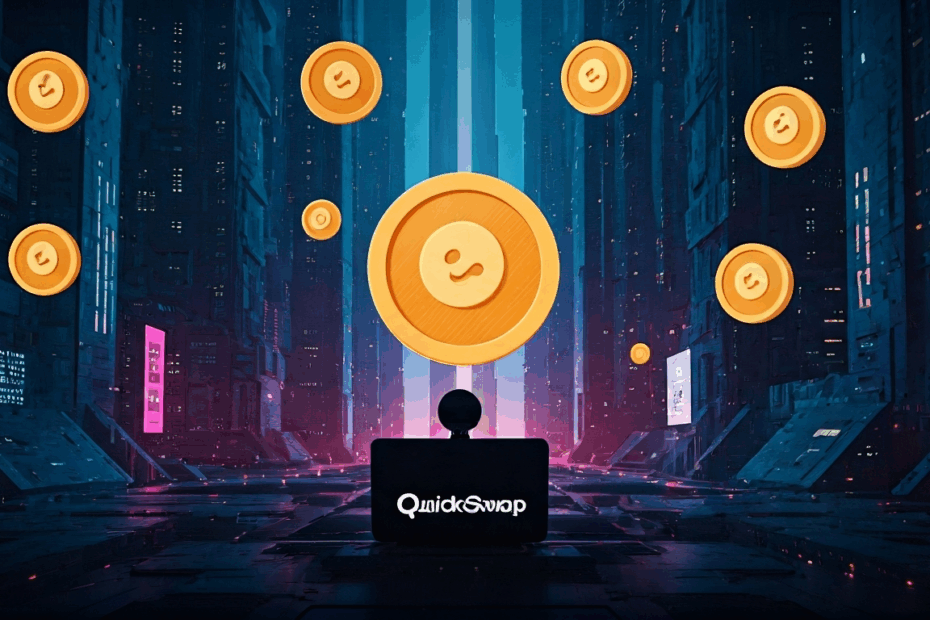QuickSwap’s ‘The Aggregated: Exploring The Future Of Memecoins And Global Web3 Trends — What Lies Ahead?’
John: Hey everyone, I’m John, a tech blogger over at Blockchain Bulletin, where I break down Web3, metaverse, and blockchain topics into bite-sized insights. Today, we’re diving into QuickSwap’s latest podcast episode from their show “The Aggregated,” which explores the future of memecoins and broader Web3 trends based on recent discussions from industry experts. If you’d like a simple starter guide to exchanges, take a look at this beginner-friendly overview.
Lila: That sounds exciting, John—readers are always buzzing about memecoins and where Web3 is heading next. Can you start by explaining what QuickSwap and this podcast are all about?
What is QuickSwap?
John: QuickSwap is a decentralized exchange (DEX, which means a platform for trading cryptocurrencies without a central authority) built on the Polygon blockchain, known for its low fees and fast transactions. It launched in 2020 and has grown to handle billions in trading volume. Currently, as of 2025-09-21, its native token QUICK trades around $0.0443 with a market cap of about $31.8 million, according to recent data from Cryptopolitan.
Lila: Got it— so it’s like a marketplace for crypto swaps. How does the podcast fit in?
Background on “The Aggregated” Podcast
John: In the past, the podcast started as “All Roads Lead to Polygon” in early 2023, focusing on Polygon’s ecosystem. It rebranded to “The Aggregated” in mid-2024 to cover broader Web3 topics, as reported by Crypto Daily on 2024-07-30. Now, it’s hit over 100 episodes, with the 100th one dropping on 2025-03-07 amid talks of a crypto rebound, per Metaverse Post.
Lila: Impressive milestone! What’s the latest episode covering?
The Latest Episode: Overview
John: The most recent episode, published on 2025-09-19 via Metaverse Post, brings together industry voices to discuss memecoins’ future. It examines how they’ve evolved from fun internet jokes to serious market players. Looking ahead, it touches on global Web3 trends like decentralized finance adoption and community-driven projects.
Lila: Memecoins? Like Dogecoin? Can you break down their evolution as mentioned?
Evolution of Memecoins
John: Absolutely—memecoins are cryptocurrencies inspired by memes or internet culture, starting with Dogecoin in 2013. In the past, they were mostly speculative, but currently, they’re integrating utility, like community governance or charity ties, as discussed in the episode. For example, some now offer staking rewards or real-world applications, evolving beyond pure hype.
Lila: That’s fascinating. What about the risks they highlighted?
Risks of “Casino Coins”
John: The podcast warns about “casino coins,” which are highly volatile memecoins that act like gambling, with quick pumps and dumps. Currently, these pose risks like financial loss due to rug pulls (when developers abandon a project and take the funds). Remember, crypto investments involve high volatility—always research thoroughly and note that regulations vary by jurisdiction; check official docs for compliance.
Lila: Good caution. Any practical tips for navigating this?
John: Sure, here’s a quick list of do’s and don’ts based on general Web3 best practices:
- Do research the team and community behind a memecoin before investing.
- Don’t invest more than you can afford to lose, given the high risks.
- Do use tools like on-chain analytics to check transaction history.
- Don’t chase hype without verifying facts from trusted sources like CoinDesk.
Lila: Helpful list! Now, what’s the role of platforms like Pump.fun in all this?
Role of Platforms Like Pump.fun
John: Pump.fun is a launchpad for creating memecoins easily on blockchains like Solana, democratizing access since its rise in 2024. In the episode, experts note how it accelerates memecoin creation but also amplifies risks by enabling quick, low-barrier launches. Currently, it’s a key player in the trend toward user-generated tokens.
Lila: So it’s speeding things up. What global Web3 trends does the episode tie into?
Global Web3 Trends and What Lies Ahead
John: Looking ahead, the discussion points to trends like AI integration in Web3 and broader adoption in regions like Asia and Africa, building on past growth in DeFi (decentralized finance, apps that replicate traditional finance without banks). For instance, memecoins could merge with NFTs for new use cases. As of now, with events like Trump’s crypto reserve talks from early 2025 influencing markets, the podcast positions these as drivers for innovation.
Lila: Exciting possibilities. Any final thoughts on why this matters?
John: This episode from QuickSwap’s “The Aggregated” highlights how memecoins are more than memes—they’re shaping Web3’s future with both opportunities and pitfalls. It encourages informed participation in this evolving space. And if you’d like a bit more background on exchanges, you might enjoy this global guide.
Lila: Thanks, John—that really clarifies the buzz around memecoins and Web3 trends. Readers, stay curious and informed!
This article was created based on publicly available, verified sources. References:
- Original Source
- QuickSwap’s “The Aggregated” Continues to Reign as The-Go-To Web3 Podcast Post-Rebrand – Crypto Daily
- Insightful QuickSwap (New) Price Analysis: Future Forecast & Market Trends – Cryptopolitan
- Industry-Leading Web3 Podcast QuickSwap’s “The Aggregated” Delivers Episode 100 on Eve of Major Crypto Rebound | Metaverse Post
